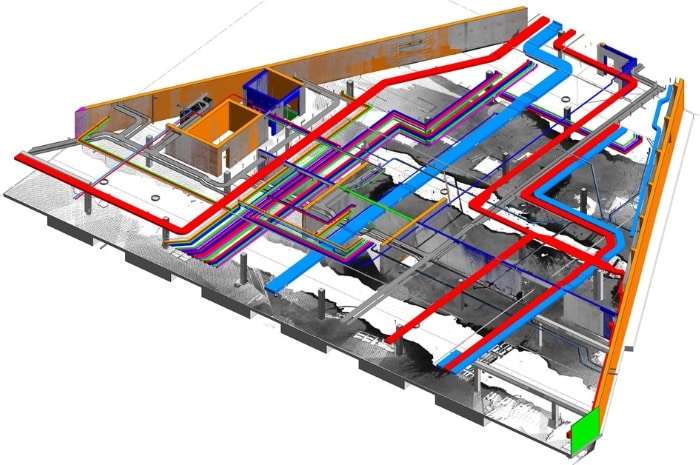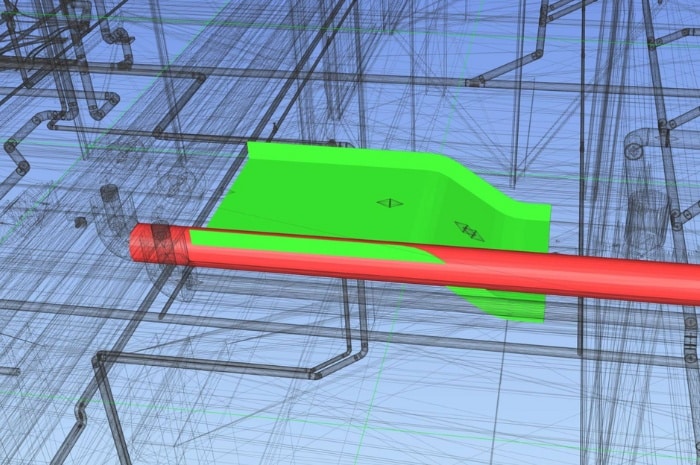Home » BIM management
BIM management
BIM Management has a wide scope that includes different roles, depending on whether we are talking about a BIM project or a company.
In Switzerland, the BIM manager must know and apply the SIA 2051 for international projects. The ISO 19650 and the UniFormat specifications must also be integrated.
BIM management of project data and interoperability are at the heart of this new activity.

BIM project management
BIM project management is the first mission of BIM management. It allows knowing the levels of BIM maturity of the companies, but also the expected objectives.
This mission is carried out by key players, namely the BIM Manager and the BIM Global Coordinator. They are responsible for supervising the project teams in setting up and using the digital model, and guiding them to ensure its success.
BIM coordination
BIM coordination consists of the spatial coordination of the technical agents, but also of the civil engineer and the architect. This is a crucial step in BIM management, it comes in addition to the mission of technical coordinator assigned to an agent.
This BIM use case is often the first to be used on projects because BIM coordination is beneficial to the optimisation of building or infrastructure work. It is important to remember that this stage of BIM management does not replace the technical responsibilities of each of the project stakeholders.
Building Execution Plan (BEP)
The BEP is the central document allowing the smooth running of a BIM project. It is drafted by the BIM Manager, in collaboration with the project managers and the client.
The BIM Execution Plan must transcribe the missions requested by the client to achieve the BIM objectives. This document is signed by all and can be appended to the contract in order to guarantee the involvement of all agents and subcontractors.
PPE configurator
The PPE configurator is the logical continuation of an architectural model in a housing construction project. This possibility offered by the BIM management project is an additional advantage for buyers and sellers.
The objective is to use the model to integrate it into a virtual showroom, which will allow future buyers to make the desired modifications in connection with the choices available in the program. Therefore, they will then have the details of the price according to their selections all in a 3D & HD environment for a realistic immersion.
Better understand the concept of BIM Management
BIM Management, or building BIM, information (LOI) and graphics (LOG) project management, is a construction project management method that uses digital technologies to manage and use information about a building throughout its life cycle.
With BIM management, the various stakeholders on a construction project – architects, engineers, contractors, etc. – can work together on a Common Data Environment (CDE) which guarantees the same level of information for everyone. This allows for better coordination and communication between project stakeholders, which leads to a reduction in errors and delays, as well as an improvement in the overall quality of the program.
By using high-precision 3D models (LOD 350), BIM management allows better planning and better forecasting of project costs, which leads to a significant benefit on the risk and contingency part of a project.
BIM Management also includes data management, which means that all project information is stored centrally and is accessible to all stakeholders. This allows for better collaboration and better traceability of changes made to the project.
In summary, BIM Management is a project management method that uses digital technologies to improve the coordination, communication and quality of a construction project, while reducing costs and improving planning.



